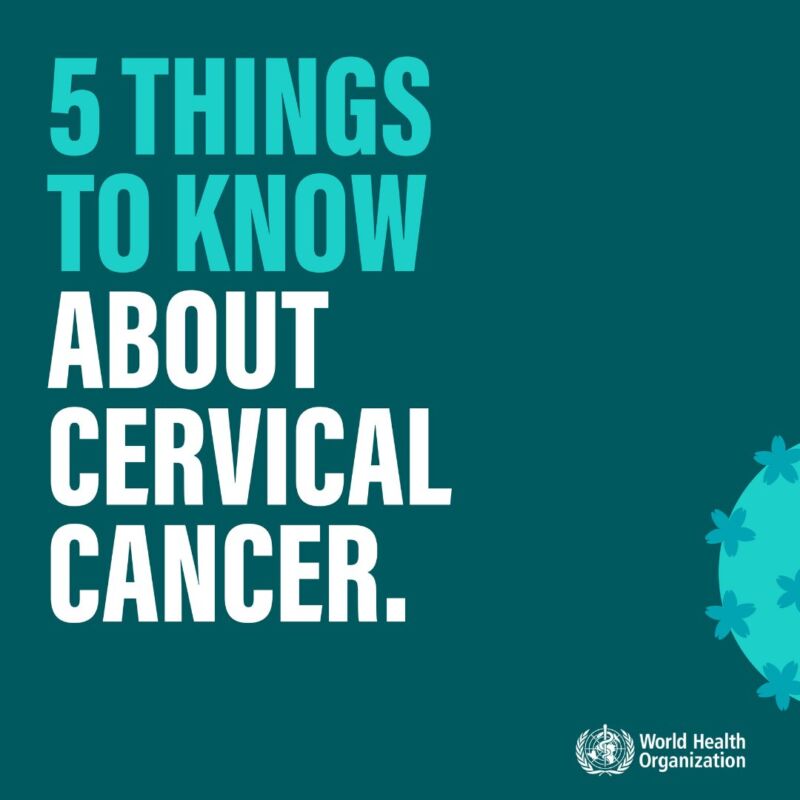“Vaginal atrophy is a condition where the lining of your
vagina gets drier and thinner. This results in itching,
burning and pain during sex, among other symptoms”.1
Umbrella
What may the Vaginal Atrophy Umbrella include?
Depending on the Source (DotS) this Umbrella may include:
- Atrophic Vaginitis
- Genital Atrophy
- Genitourinary Syndrome of Menopause (GSM)
- Urogenital Problems
- Vaginal Atrophy
- Vaginal Discomfort
- Vaginal Dryness
- Vaginal Symptoms
- Vulvovaginal Atrophy (VVA)
Definition
What is vaginal atrophy?
DotS the definition of vaginal atrophy may vary. The (United States) Mayo Clinic’s definition is:
“Vaginal atrophy (atrophic vaginitis) is thinning, drying and inflammation of the vaginal walls that may occur when your body has less estrogen. Vaginal atrophy occurs most often after menopause”.2
The (United States) Cleveland Clinic’s definition is:
“Vaginal atrophy is a condition where the lining of your vagina gets drier and thinner. This results in itching, burning and pain during sex, among other symptoms. The condition also includes urinary tract problems such as urinary tract infections (UTIs) and urinary incontinence”.3
The (Australian) Jean Hailes for Women’s Health (JH) definition is:
Genitourinary Syndrome of Menopause
What is the genitourinary syndrome of menopause (GSM)?
DotS the definition of vaginal atrophy may vary. In Vaginal Atrophy: Overview – What Is Vaginal Atrophy? the Cleveland Clinic note:
“Recently, the term vaginal atrophy has been replaced with the newer term, genitourinary syndrome of menopause (GSM). This new term helps describe not just the vaginal, but also the urinary symptoms that may occur as a result of low estrogen”.5
In Vaginal Atrophy: Overview the Mayo Clinic explain:
Common or Not
How common is vaginal atrophy?
In Vulvovaginal Atrophy: What Is Vulvovaginal Atrophy? the JH note:
 “Vaginal atrophy affects about 40% of postmenopausal women – and the risk increases with age”.7
“Vaginal atrophy affects about 40% of postmenopausal women – and the risk increases with age”.7
In Vaginal Atrophy: Overview – How Common Is Vaginal Atrophy? (GSM) the Cleveland Clinic note:
“At least half of women and people AFAB who enter menopause show signs and symptoms of genitourinary syndrome of menopause. Vaginal dryness is typically the first indication that a person is developing vaginal atrophy”.8
Symptoms
What may be symptoms of vaginal atrophy?
In Vulvovaginal Atrophy the European Menopause and Andropause Society explain:
 “Symptoms include:
“Symptoms include:
- Irritation
- Burning
- Itching
- Chafing
- Discomfort
- Uncomfortable or even painful intercourse
- Passing urine more frequently
- More frequent urinary tract infections
- Greater discomfort with cervical smear tests”.9
Cause
What causes vaginal atrophy?
In Vaginal Atrophy: Symptoms & Causes – Causes the Mayo Clinic elaborate on:
“Genitourinary syndrome of menopause is caused by a decrease in estrogen production. Less estrogen makes your vaginal tissues thinner, drier, less elastic and more fragile”.10
Treatment
How can VVA be treated?
In Vaginal Atrophy: Can Vaginal Atrophy Be Reversed? the JH note:
On page one and two in Genitourinary Syndrome of Menopause: Treatment Options, published 2025, the (United States) Menopause Society, (formerly the North American Menopause Society) elaborate on:
- Nonhormone Remedies
- Vaginal Lubricants…
- Vaginal Moisturizers…
- Regular Sexual Stimulation…
- Expanding Your Views of Sexual Pleasure…
- Vaginal Dilators…
- Pelvic Floor Exercises…
- Vaginal Hormone Therapy…
- An effective and safe treatment, low-dose local estrogen applied directly to the vulva and vagina relieves vulvar and vaginal discomfort, irritation, dryness, or pain with sexual activity…
- FDA-approved low-dose vaginal estrogen products…
- Dehydroepiandrosterone (DHEA; Prasterone)
- Low-dose vaginal estrogen or DHEA may be options for…
- Systemic Estrogen Therapy
- Other Therapies…
- Ospemifene
- Vaginal Laser Therapy…”.12
The Mayo Clinic also note:
“… make an appointment to see your doctor if you experience painful intercourse that’s not resolved by using a vaginal moisturizer (K-Y Liquibeads, Replens, Sliquid, others) or water-based lubricant (Astroglide, K-Y Jelly, Sliquid, others)”.13
Vaginal Estrogen
Can estrogen be placed directly into the vagina?
On page one in Deciding About Hormone Therapy Use published 2025, the Menopause Society explain:
“If you are bothered only by vaginal dryness, you can use very low doses of estrogen placed directly into the vagina. These low doses generally do not raise blood estrogen levels above postmenopause levels and do not treat hot flashes. You do not need to take a progestogen when using only low doses of estrogen in the vagina”.14
On page three in the Joint Position Statement By the British Menopause Society, Royal College of Obstetricians and Gynaecologists and Society for Endocrinology on Best Practice Recommendations for the Care of Women Experiencing the Menopause first published online 10 June 2022, one of the recommendations is:
- “Low-dose and ultra-low dose vaginal oestrogen preparations can be taken by perimenopausal and menopausal women experiencing genitourinary symptoms and continued for as long as required. All vaginal oestrogen preparations have been shown to be effective in this context and there is no requirement to combine vaginal oestrogens with systemic progestogen treatment for endometrial protection, as low-dose and ultra-low dose vaginal oestrogen preparations do not result in significant systemic absorption or endometrial hyperplasia”.15
In The 2023 Practitioner’s Toolkit for Managing Menopause: Management – Local Treatment of Urogenital Atrophy published December 2023, the authors note:
Sexual Activity
May regular sexual activity help?
In Vaginal Atrophy: What You Can Do About Vulvovaginal Atrophy – Regular Sexual Activity Including Masturbation the JH explain:
- “Regular sexual activity improves blood flow to your vagina, which can keep vaginal tissues elastic and flexible. Sexually active women report fewer symptoms of vulvovaginal atrophy compared to women who don’t have regular sex”.17
Health Care Provider
What if I think I have vaginal atrophy?
If you think you have vaginal atrophy, it may be in your best interest to choose to talk to your health care provider about this.
In Vaginal Atrophy: When To See Your Doctor the JH note:
“Many women have symptoms of vulvovaginal atrophy, such as painful sex, but they don’t seek treatment because they feel embarrassed or think nothing can be done. It’s important to get the right diagnosis and treatment, so see your doctor if you have any symptoms”.18
Health Topics A-Z
Where may I find Health Topics A-Z related to the Vaginal Atrophy?
In Health Topics A-Z you may find:
Links
Where may I find Links related to Vaginal Atrophy?
Your Country may have Links similar to:
Links
This Links List to third party websites is neither comprehensive nor exhaustive. Inclusion on this Links List does not imply endorsement or recommendation. Non-inclusion on this Links List does not imply non-endorsement or non-recommendation. Third party websites are not under the control of Meno Martha International Menopause Directory. Third party websites may contain explicit medical images and/or sexual references. Please read Meno Martha International Menopause Directory’s Links Policy before proceeding to a Link. Please contact Webmaster if you experience a problem with a Link.New or Updated
- FDA Direct: Removing Black Box Warnings for HRT (Part 1/2) [10 November 2025]
- Genitourinary Syndrome of Menopause [May 2025]
- How Vaginal Hormones Can Transform the Health of Women [24 November 2025]
- Non-Hormonal Treatments Offer Relief for Genitourinary Syndrome of Menopause [17 May 2025]
- Webinars: The Burn, the Itch, the Pain, the Urge: GSM In Women [15 April 2025]
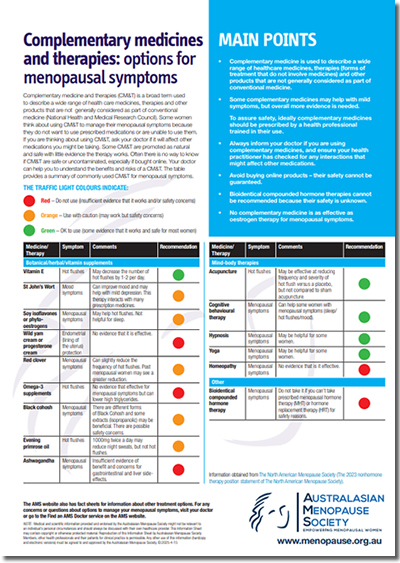 About the Vulva and Vagina
About the Vulva and Vagina- Are Probiotics Good for Vaginal Health?
- Askearlymenopause.org [Ask EM] [+ Video: What Is Early Menopause?]
- BMS TV: Urogenital Atrophy
- Bioidentical Hormones: Are They Safer?
- Caredownthere.com.au
- Complementary Medicines and Therapies: Options for Menopausal Symptoms
- Consumer Video and Podcast Series: 2024 Consumer Videos and Podcasts – Preparing for Your Menopause Health Care Visit
- Caredownthere.com.au
- Deciding About Hormone Therapy Use
- Douching
- Estradiol (Vaginal Route)
- Estradiol (Vaginal Route): Brand Name US
- Experts Answer Your Menopause Questions In New Video
- Experiencing Vaginal Dryness? Here’s What You Need To Know
- FAQs: Vulvovaginal Health
- FDA Direct: Removing Black Box Warnings for HRT (Part 1/2) [10 November 2025]
- FDA Direct: Removing Black Box Warnings for HRT (Part 2/2) [11 November 2025]
- Find A Menopause Practitioner [United States and Other]
- Find A Practitioner [Australasian Menopause Society i.e. Australia and New Zealand]
- Find Your Nearest BMS Menopause Specialist [British Menopause Society]
- Gaslighting of Genitourinary Symptoms of the Menopause
- Genitourinary Syndrome of Menopause
- Genitourinary Syndrome of Menopause
- Genitourinary Syndrome of Menopause and the False Promise of Vaginal Laser Therapy
- Hormone Replacement Therapy (HRT): Vaginal Oestrogen
- Hormone Replacement Therapy (HRT): Vaginal Oestrogen: About Vaginal Oestrogen
- Hormone Replacement Therapy (HRT): Vaginal Oestrogen: Common Questions About Vaginal Oestrogen
- Hormone Replacement Therapy (HRT): Vaginal Oestrogen: Side Effects of Vaginal Estrogen
- How To Manage Menopausal Symptoms
- How To Talk To Your Doctor About Painful Sex
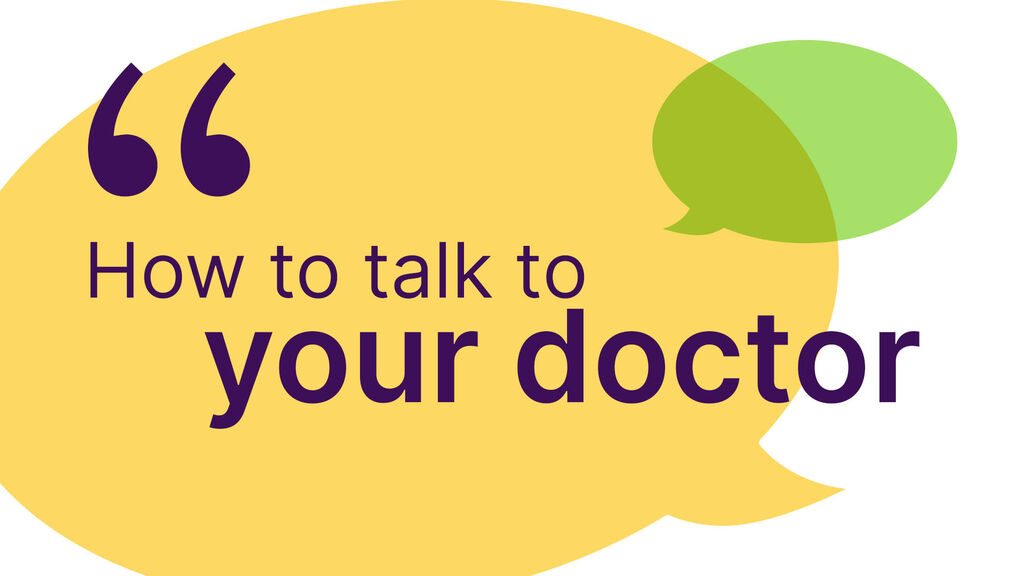
- How Vaginal Hormones Can Transform Lives | The Dr Louise Newson Podcast
- International Society for the Study of Vulvovaginal Diseases: Patient Handouts
- International Society for the Study of Women’s Sexual Health: Find A Provider
- Joint Position Statement By the British Menopause Society, Royal College of Obstetricians and Gynaecologists and Society for Endocrinology on Best Practice Recommendations for the Care of Women Experiencing the Menopause
- Later Years (Around 50 Years and Over): Menopause and Post Menopause Health – Sexual Wellbeing, Intimacy and Menopause [+ Video: Menopause Is the End of Your Sex Life]
- Later Years (Around 50 Years and Over): Menopause and Post Menopause Health – Supporting Someone Through the Menopause [+ Video: Men Don’t Need To Know About Menopause]
- Let’s Talk About Perimenopause
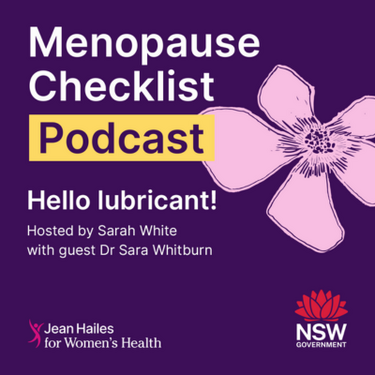 Lubricant Alternatives: What To Use and What To Avoid
Lubricant Alternatives: What To Use and What To Avoid- Management of Perimenopausal and Menopausal Symptoms
- Mayo Clinic Q and A: Perimenopause Transitions and Concerns
- Menopause
- Menopause Checklist Podcast: Episode 6: Hello Lubricant!
- Menopause Hormone Therapy and Urinary Symptoms: A Systematic Review [Video]
- Menopause Map: Downloadable Resources – My Personal Path Print Tools: Questions for Your Health Care Provider
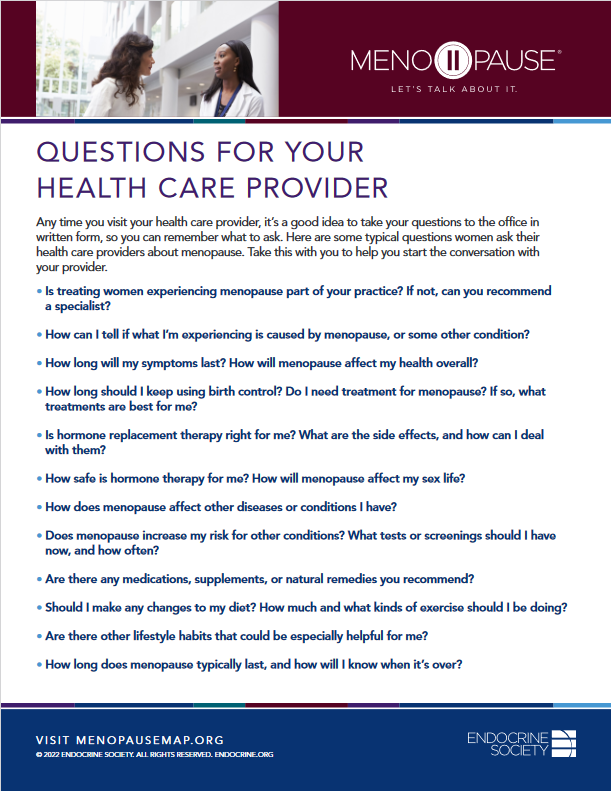
- Menopause Map: Downloadable Resources – My Personal Path Print Tools: Symptom Tracker
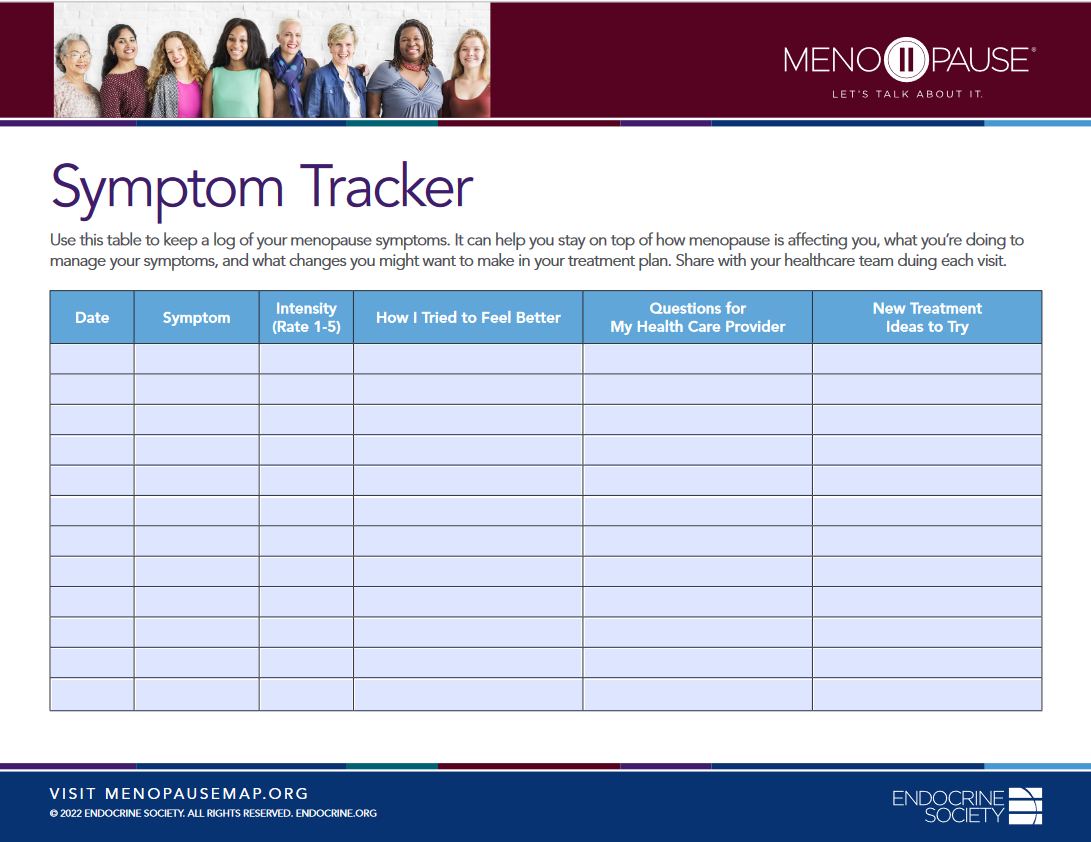
- Menopause Ruining Your Sex Life?
- Menopause Symptoms: Mayo Clinic Expert Outlines Hormone and Nonhormonal Therapies
- Menopause Treatments: What Works, What Doesn’t – Treatments for Vaginal Dryness
- Menopause: Identification and Management [NICE Guideline Published: 12 November 2015 Last Updated: 07 November 2024]

- Menopause: Identification and Management: NICE Guideline [NG23] Published: 12 November 2015 Last Updated: 07 November 2024
- National Center for Complementary and Integrative Health: Herbs At A Glance
- National Center for Complementary and Integrative Health: How Safe Is This Product or Practice?
- Navigating Menopause Together: How Partners Can Help
- Non-Hormonal Treatments Offer Relief for Genitourinary Syndrome of Menopause
- Perimenopause

- Perimenopause
- Perimenopause and Menopause Checklist: Translated Checklists
- Perimenopause and Menopause Symptom Checklist
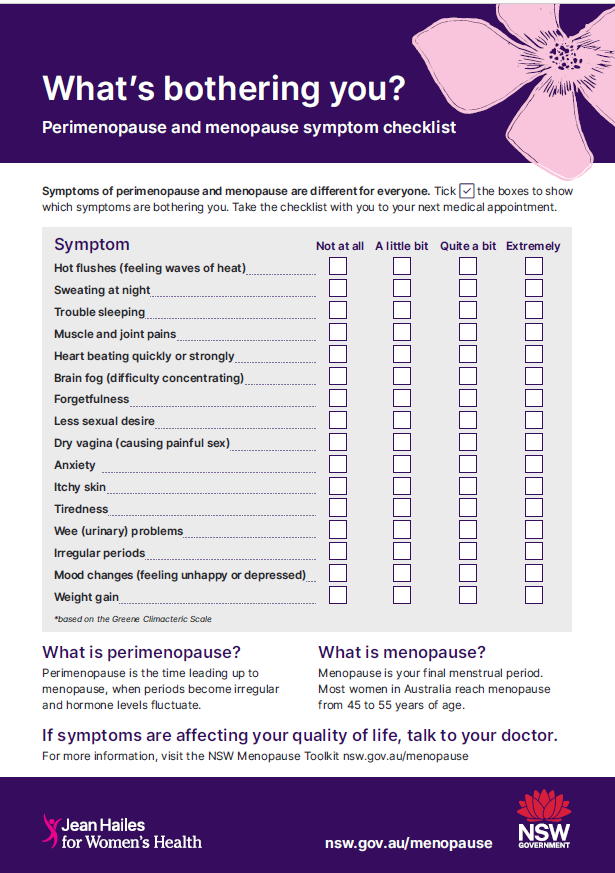
- Prosayla.com [Prosayla Supported By the ISSWSH [International Society for the Study of Women’s Sexual Health]]
- Sexual Health
- Sexual Problems and Menopause
- Supplements: What Works, What Doesn’t and the Truth About Menowashing
- Supporting A Loved One Through Menopause
- Symptoms of Menopause: Bladder, Vaginal and Vulval Problems
- Topical Vaginal Oestrogen for Breast Cancer Patients
- Treatments for Menopause
- Urogenital Problems
- Vaginal Atrophy
- Vaginal Atrophy
- Vaginal and Vulval Pain: Know the Different Causes and When To Seek Help
- Vaginal Dryness
- Vaginal Dryness
- Vaginal Dryness
- Vaginal Dryness
- Vaginal Dryness After Menopause: Since going through menopause, I often have vaginal dryness. The dryness makes having sex painful. Is there anything I can do about it?
- Vaginal Dryness Alternative Treatments
- ‘Vaginal Dryness’ Can Be Fatal. No, Really.
- Vaginal Laser Therapy for GSM/VVA: Where We Stand Now – A Review By the EUGA Working Group on Laser
- Vaginal Oestrogen Is A Treatment on the Rise, But Is It Safe?
- Videos & Podcasts: Videos – Menopause and Hormone Therapy: Current Perspectives and Controversies
- Videos and Podcasts: Videos – Vulvovaginal Atrophy
- Vulva Irritation: Treatment and Management [+ Video]
- Vulval and Vaginal Conditions: Vaginal Atrophy
- Vulvovaginal Atrophy
- Vulvovaginal Atrophy
- Webinars: Previous – Pay Attention on Your Way In! The Vulva Is An Important Organ Too
- Webinars: Previous – The Burn, the Itch, the Pain, the Urge: GSM In Women
- What Happens To Your Vagina As You Age?
- What Is the Difference Between Vagifem and Estring?
- What Types of Vaginal Oestrogens Are There?
- When Does Perimenopause Start and How Do You Define the Beginning
- Which Vaginal Moisturiser Should You Use?
- Why You Do Not Ever Need To Douche
- World GO Day [World Gynecologic Oncology Day, 20 September 2025]

- World Menopause Day 2024: Leaflet for Women – Menopause and Menopause Hormone Therapy [Multiply Languages]
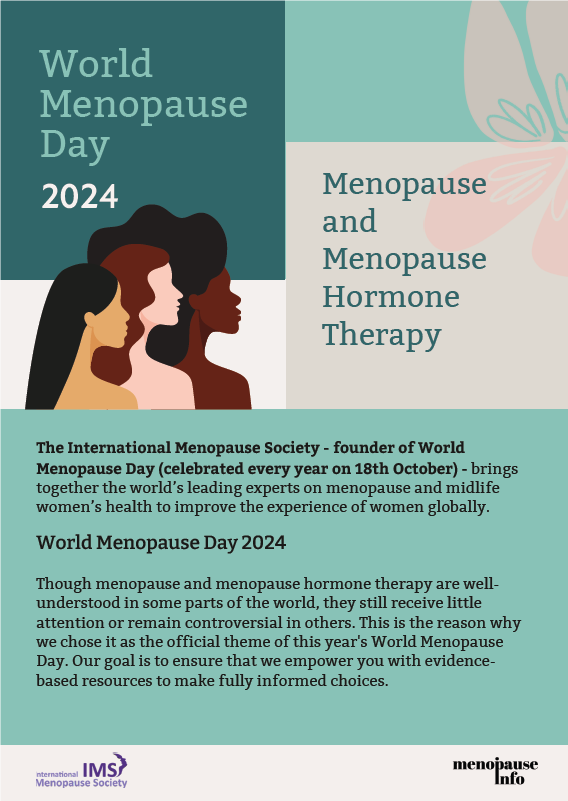 World Menopause Day 2024: Poster for Women – The 5 Ws of Menopause Hormone Therapy (MHT)
World Menopause Day 2024: Poster for Women – The 5 Ws of Menopause Hormone Therapy (MHT)
Sources
Where may I find the Sources quoted?
You may find the Sources quoted at:
Sources
- Vaginal Atrophy: Overview – What Is Vaginal Atrophy? Last Updated: 10 April 2023. Cleveland Clinic https://my.clevelandclinic.org/health/diseases/15500-vaginal-atrophy Accessed: 27 August 2025
- Vaginal Atrophy: Symptoms & Causes – Overview. 17 September 2021. Mayo Clinic https://www.mayoclinic.org/diseases-conditions/vaginal-atrophy/symptoms-causes/syc-20352288 Accessed: 27 August 2025
- Vaginal Atrophy: Overview – What Is Vaginal Atrophy? Last Updated: 10 April 2023. Cleveland Clinic https://my.clevelandclinic.org/health/diseases/15500-vaginal-atrophy Accessed: 27 August 2025
- Vulvovaginal Atrophy: What Is Vulvovaginal Atrophy? Last Updated: 15 August 2025. Last Reviewed: 02 June 2025. Jean Hailes for Women’s Health https://www.jeanhailes.org.au/health-a-z/vulva-vagina/vulval-vaginal-conditions/vaginal-atrophy Accessed: 27 August 2025
- Vaginal Atrophy: Overview – What Is Vaginal Atrophy? Last Updated: 10 April 2023. Cleveland Clinic https://my.clevelandclinic.org/health/diseases/15500-vaginal-atrophy Accessed: 27 August 2025
- Vaginal Atrophy: Symptoms & Causes – Symptoms: When To See A Doctor. 17 September 2021. Mayo Clinic https://www.mayoclinic.org/diseases-conditions/vaginal-atrophy/symptoms-causes/syc-20352288 Accessed: 27 August 2025
- Vulvovaginal Atrophy: What Is Vulvovaginal Atrophy? Last Updated: 15 August 2025. Last Reviewed: 02 June 2025. Jean Hailes for Women’s Health https://www.jeanhailes.org.au/health-a-z/vulva-vagina/vulval-vaginal-conditions/vaginal-atrophy Accessed: 27 August 2025
- Vaginal Atrophy: Overview – How Common Is Vaginal Atrophy (GSM)? Last Updated: 10 April 2023. Cleveland Clinic https://my.clevelandclinic.org/health/diseases/15500-vaginal-atrophy Accessed: 27 August 2025
- Vulvovaginal Atrophy. 2022 European Menopause and Andropause Society https://emas-online.org/wp-content/uploads/2022/07/Vulvovaginal-atrophy.pdf Accessed: 27 August 2025
- Vaginal Atrophy: Symptoms & Causes – Causes. 17 September 2021. Mayo Clinic https://www.mayoclinic.org/diseases-conditions/vaginal-atrophy/symptoms-causes/syc-20352288 Accessed: 27 August 2025
- Vulvovaginal Atrophy: Can You Reverse Vaginal Atrophy? Last Updated: 15 August 2025. Last Reviewed: 02 June 2025. Jean Hailes for Women’s Health https://www.jeanhailes.org.au/health-a-z/vulva-vagina/vulval-vaginal-conditions/vaginal-atrophy Accessed: 27 August 2025
- Genitourinary Syndrome of Menopause: Treatment Options. 2025:1-2. Menopause Society https://menopause.org/wp-content/uploads/for-women/MenoNote-GSM.pdf Accessed: 27 August 2025
- Vaginal Atrophy: Symptoms & Causes – Symptoms: When To See A Doctor. 17 September 2021. Mayo Clinic https://www.mayoclinic.org/diseases-conditions/vaginal-atrophy/symptoms-causes/syc-20352288 Accessed: 27 August 2025
- Deciding About Hormone Therapy Use. 2025:1. The Menopause Society https://menopause.org/wp-content/uploads/default-document-library/MenoNote-Deciding-About-HT-2025.pdf Accessed: 27 August 2025
- Hamoda, H., Mukherjee, A., Morris, E., Baldeweg, S. E., Jayesena, C. N., Briggs, P., Moger, S. Joint Position Statement By the British Menopause Society, Royal College of Obstetricians and Gynaecologists and Society for Endocrinology on Best Practice Recommendations for the Care of Women Experiencing the Menopause. First Published Online 10 June 2022 https://journals.sagepub.com/doi/full/10.1177/20533691221104879 Accessed: 27 August 2025
- Davis, S. R., Taylor, S., Hemachandra, C., Magraith, K., Ebeling, P. R., Jane, F., and Islam, R. M. The 2023 Practitioner’s Toolkit for Managing Menopause: Management – Local Treatment of Urogenital Atrophy. Published Online: 01 December 2023 https://www.tandfonline.com/doi/full/10.1080/13697137.2023.2258783 Accessed: 27 August 2025
- Vaginal Atrophy: What You Can Do About Vulvovaginal Atrophy – Regular Sexual Activity Including Masturbation. Last Updated: 15 August 2025. Last Reviewed: 02 June 2025. Jean Hailes for Women’s Health https://www.jeanhailes.org.au/health-a-z/vulva-vagina/vulval-vaginal-conditions/vaginal-atrophy Accessed: 27 August 2025
- Vulvovaginal Atrophy: When To See Your Doctor. Last Updated: 15 August 2025. Last Reviewed: 02 June 2025. Jean Hailes for Women’s Health https://www.jeanhailes.org.au/health-a-z/vulva-vagina/vulval-vaginal-conditions/vaginal-atrophy Accessed: 27 August 2025







